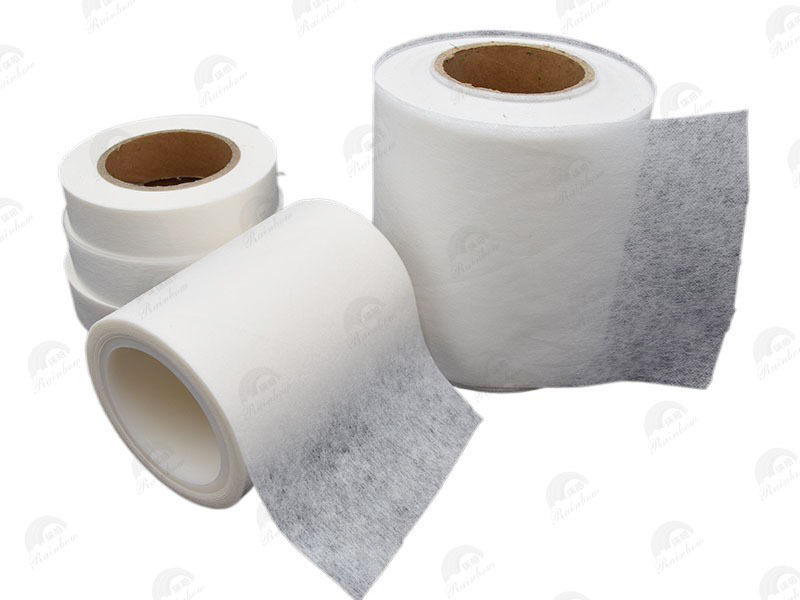Transform Your Garment Production with GRS Certified Nonwoven Interlining
Release time:
2025-06-05
Transform Your Garment Production with GRS Certified Nonwoven Interlining
Table of Contents
- What is Nonwoven Interlining?
- The Significance of GRS Certification
- Benefits of GRS Certified Nonwoven Interlining
- Applications in Garment Production
- Sustainability and Environmental Impact
- How to Select GRS Certified Nonwoven Interlining
- Comparison with Traditional Interlinings
- Best Practices for Using Nonwoven Interlining
- Frequently Asked Questions
What is Nonwoven Interlining?
Nonwoven interlining is a type of fabric that is manufactured using a process that bonds fibers together to create a textile without the need for weaving or knitting. This innovative material offers a wide range of properties that make it ideal for garment production. It comes in various weights and thicknesses, enabling designers to select the appropriate type for their specific needs. In essence, nonwoven interlining serves as a support layer, enhancing the structure and durability of garments while also improving their overall appearance.
The Significance of GRS Certification
Global Recycled Standard (GRS) certification is a comprehensive product standard that verifies the recycled content of materials, alongside responsible social, environmental, and chemical practices in production. The significance of GRS certification in the textile industry cannot be overstated, as it guarantees that the nonwoven interlining used in garment production is sourced from recycled materials and manufactured sustainably. This certification not only enhances a brand's credibility but also assures consumers of their commitment to environmental responsibility.
Understanding the GRS Certification Process
Obtaining GRS certification involves a rigorous evaluation process, which includes the tracking of materials through the supply chain, compliance with social and environmental standards, and regular audits. This ensures that all aspects of production meet the stringent requirements set forth by GRS, providing consumers with peace of mind that they are purchasing ethically produced textiles.
Benefits of GRS Certified Nonwoven Interlining
Incorporating GRS certified nonwoven interlining into garment production offers numerous benefits. These include:
1. Enhanced Quality and Durability
GRS certified nonwoven interlining is designed to provide superior strength and durability, ensuring that garments maintain their shape and structure over time. This results in high-quality finished products that can withstand wear and tear.
2. Eco-Friendly Choice
Utilizing recycled materials in the creation of nonwoven interlining significantly reduces waste and contributes to a circular economy. By choosing GRS certified options, manufacturers can lower their environmental footprint and appeal to environmentally conscious consumers.
3. Versatility in Applications
GRS certified nonwoven interlining can be used across a wide range of applications in garment production, including collars, cuffs, waistbands, and more. Its adaptability makes it a preferred choice for various fabric types, from delicate silks to heavy denim.
4. Improved Styling and Aesthetics
This type of interlining helps achieve the desired drape and finish of garments, enhancing their aesthetic appeal. Designers can create more polished looks with less effort, making it a valuable tool in garment production.
5. Cost-Effectiveness
While there may be an initial investment in GRS certified materials, the long-term savings associated with reduced returns and satisfied customers can far outweigh upfront costs. Durable products lead to fewer replacements and returns, resulting in better profitability.
Applications in Garment Production
The versatility of GRS certified nonwoven interlining allows it to be utilized in various garment production scenarios:
1. Tailored Garments
In tailored clothing, such as suits and blazers, nonwoven interlining provides structure and support, giving the garment a polished silhouette.
2. Casual Wear
For casual wear, it can enhance the comfort and fit of garments like shirts and blouses, ensuring they look good while maintaining a relaxed feel.
3. Outerwear
In jackets and coats, GRS certified nonwoven interlining can improve insulation properties and overall durability, making it an excellent choice for outerwear manufacturers.
4. Children’s Clothing
In children's clothing, nonwoven interlining can provide extra strength to withstand the rigors of play while also ensuring a comfortable fit.
Sustainability and Environmental Impact
As consumers become more environmentally aware, the demand for sustainable materials in garment production has surged. GRS certified nonwoven interlining stands out as a solution that not only meets this demand but also sets a new standard for environmental responsibility in the industry. It actively contributes to reducing landfill waste and conserves natural resources by utilizing recycled materials.
1. Reducing Carbon Footprint
By choosing GRS certified options, brands can significantly reduce their carbon emissions associated with raw material production. This shift towards sustainable practices aligns with global efforts to combat climate change.
2. Promoting a Circular Economy
GRS certification encourages manufacturers to adopt practices that support a circular economy, where materials are reused and recycled rather than discarded. This approach not only benefits the environment but also promotes innovation in textile production.
How to Select GRS Certified Nonwoven Interlining
Choosing the right GRS certified nonwoven interlining for your garment production involves several key steps:
1. Assess Your Needs
Consider the specific requirements of your garment type, including desired weight, thickness, and stretch. This will help you narrow down your options.
2. Research Suppliers
Look for reputable suppliers who provide GRS certified nonwoven interlining. Check their certification status and request samples to evaluate quality.
3. Evaluate Performance Characteristics
Examine the performance characteristics of the nonwoven interlining, such as adhesive properties, durability, and resistance to washing and wear. This ensures it meets your production standards.
4. Consider Aesthetic Qualities
Pay attention to the aesthetic qualities of the interlining, such as drape and feel. It should complement the outer fabric and enhance the overall look of the garment.
Comparison with Traditional Interlinings
While traditional interlinings serve similar purposes, GRS certified nonwoven interlining offers distinct advantages:
1. Environmental Benefits
Traditional interlinings often rely on virgin materials, while GRS certified options utilize recycled content, making them a more sustainable choice.
2. Performance
GRS certified nonwoven interlining typically provides superior performance in terms of durability and adaptability compared to traditional woven interlinings.
3. Versatility
Nonwoven interlining can be engineered for specific applications, allowing for tailored solutions that traditional interlinings may not offer.
Best Practices for Using Nonwoven Interlining
To maximize the benefits of GRS certified nonwoven interlining in your garment production, consider these best practices:
1. Proper Fabric Preparation
Ensure that the outer fabric is properly prepped, as this will affect how well the nonwoven interlining adheres and performs in the final garment.
2. Correct Application Techniques
Utilize the appropriate application techniques, including the right temperature and pressure settings, to ensure a strong bond between the interlining and the outer fabric.
3. Conduct Quality Testing
After production, conduct quality testing to evaluate the performance of the garment. This includes checking for durability, appearance, and fit.
Frequently Asked Questions
1. What is the difference between woven and nonwoven interlining?
Woven interlining is made by weaving threads together, providing structure and support, while nonwoven interlining is made by bonding fibers, resulting in a more lightweight and versatile material.
2. Is GRS certified nonwoven interlining more expensive than traditional interlining?
While the initial cost may be higher, the long-term benefits in durability and sustainability often make GRS certified nonwoven interlining a more cost-effective choice.
3. Can GRS certified nonwoven interlining be used for all types of fabrics?
Yes, GRS certified nonwoven interlining can be used with a wide variety of fabrics, but it’s essential to select the appropriate type based on the specific garment requirements.
4. How does GRS certification benefit consumers?
GRS certification provides consumers with assurance that the products they purchase are made from recycled materials and produced sustainably, aligning with their values for environmental responsibility.
5. What are the best application methods for nonwoven interlining?
The best methods typically include fusible bonding, where heat and pressure are applied, or sewing, depending on the specific garment and fabric type.
Conclusion
Adopting GRS certified nonwoven interlining in garment production is not just a trend; it’s a strategic move that aligns with the growing consumer demand for sustainability and high-quality textiles. By choosing this innovative material, producers can enhance the quality of their garments, reduce their environmental impact, and ultimately, elevate their brand’s reputation. As the fashion industry continues to evolve, incorporating GRS certified nonwoven interlining is a step towards a more sustainable and responsible future in garment production.
GRS Certified Nonwoven Interlining
Latest News
Nantong Rainbow Technology Co., Ltd.
Telephone:+86-13587673537
E-mail:chrislc717@163.com
Address: Group 42, Xizansi Village, Xiting Town, Tongzhou District, Nantong City, Jiangsu Province

Copyright©2024 Nantong Rainbow Technology Co., Ltd. | Powered by www.300.cn
Copyright©2024 Nantong Rainbow Technology Co., Ltd.
Powered by www.300.cn




